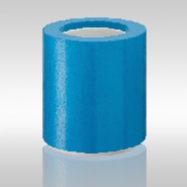How To Clean Engine Seals ?
2024-05-28
Engine seals play a critical sealing and protective role in automotive engine systems. Over time, seals can be subject to the buildup of dirt, oil, and dust, causing their performance to deteriorate or even leak.
Therefore, regular cleaning of engine seals is an important step to keep your engine up and running and extend its life. This article will introduce some effective methods and precautions to help you clean your engine seals properly.
Preparations
1. Security Measures
Before cleaning the engine seals, make sure the vehicle is in a safe position and the engine has cooled. Also, wear appropriate personal protective equipment such as gloves and goggles to prevent skin and eye irritation by chemicals.
2. Tools And Materials
Have the tools and materials needed to clean your engine seals, including car wash fluid, warm water, brushes (soft bristles and brush heads), a clean cloth, and compressed air.
Steps To Clean Engine Seals
1. External Cleaning
First, wash the engine surface with a mixture of car wash fluid and warm water to remove dirt and oil stains from the surface. Use a soft-bristled brush to gently wipe the area around the seal to ensure no damage to the seal. Then rinse the engine surface with clean water, making sure to wash all detergents.
3. Deep Cleansing
For heavily contaminated engine seals, specialized engine cleaners can be used. According to the instructions of the cleaning agent, spray it on the area near the seal and wait for some time as directed to allow the cleaning agent to fully work. Then use the brush head to gently brush the seal surface to remove stubborn dirt and oil. Be careful not to over-brush or use a brush that is too stiff to avoid damaging the seal.
4. Rinse And Dry
Rinse the engine surface thoroughly with clean water to ensure that the cleaner and dirt are completely removed. Then use a clean cloth or absorber to wipe the moisture off the surface dry. For hard-to-reach areas, compressed air can be used to blow dry.
5. Inspection And Maintenance
After cleaning engine seals, carefully inspect their surfaces for signs of damage, cracks, or aging. If any problems are found, replace the seals in time to ensure the normal operation of the engine.

Precautions
1. Avoid Spraying High-Pressure Water Directly
When cleaning engine seals, avoid spraying the seals directly with a high-pressure water jet, as it can be damaged by them. Try to clean with a gentle stream of water and a brush.
2. Avoid Acidic Cleaners
Acid cleaners can cause damage to engine seals. Therefore, when choosing a cleaning agent, make sure to choose a non-acidic cleaning agent to avoid corrosion and damage to the seal.
3. Exercise Carefully
When cleaning engine seals, be careful to avoid excessive force or scratching the surface of the seal with sharp tools. This can lead to damage or rupture of the seal.
4. Clean Regularly
Regular cleaning of engine seals is key to maintaining its proper functioning and extending its service life. It is recommended to develop a cleaning plan based on the recommendations of the car manufacturer and implement it regularly.
Conclusion
Cleaning engine seals is an important step in maintaining engine system performance. With the right steps and precautions, engine seals can be effectively cleaned and ensured proper operation.
Regular cleaning and maintenance will help extend the life of the engine seals and improve the reliability and performance of the car.





 Contact:Pulim International Marketing
Contact:Pulim International Marketing Tel:+86 (512) 66333588
Tel:+86 (512) 66333588 Fax:+86 (512) 66333988
Fax:+86 (512) 66333988 E-mail:sales@pulim.cn
E-mail:sales@pulim.cn Add:No.155 Huayang Road, Xiangcheng District, Suzhou, P.R.China
Add:No.155 Huayang Road, Xiangcheng District, Suzhou, P.R.China
 Home
Home Products
Products Contact
Contact